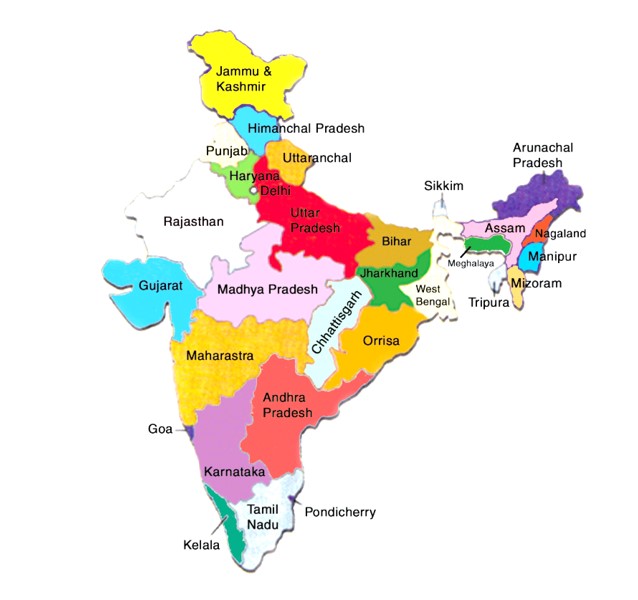About Register of Indigenous Inhabitants of Nagaland (RIIN)
What is RIIN?
- RIIN stands for: Register of Indigenous Inhabitants of Nagaland (RIIN)
- RIIN will be the master list of all indigenous inhabitant of Nagaland
- The decision to setup the RIIN was based on the recommendations of the Committee on Inner Line Permit report headed by Abhishek Singh (IAS), submitted to the state cabinet on February 15, 2019.
What is the Objective of RIIN?
- to prevent issuance of fake indigenous inhabitant certificates
- RIIN data also to feed ILP system
How is RIIN proposed to be implemented?
How is the RIIN list to be prepared?
- RIIN is proposed to be prepared from an extensive survey.
- The RIIN list to be prepared with the help of village wise and ward wise list of indigenous inhabitants based on official records under the supervision of district administration.
- The preparation of RIIN list to start with effect from 10 July 2019 and to be completed in a period of 60 days.
- RIIN will be prepared by designating survey teams for each village and ward.
- The survey team will include SDO (C) /EAC as chairman, BDO/UDO as member, Headmaster of Government High School-to be nominated by DEO as member, 2 Gaon Buras nominated by the Deputy Commissioner as members and 2 GPS/GMS/GHS teachers-nominated by DEO as members.
- The exercise will also involve house-to-house visit to make a list of indigenous inhabitants actually residing in the household.
- The format for making the list will mention “Permanent Residence and Present Residence” separately, while Aadhaar numbers, wherever available, will also be recorded.
Review procedures:
- The provisional lists of Indigenous Inhabitants prepared by the teams will then be published in the respective villages and wards and also on the websites of the district and the state government on September 11, 2019.
- The provisional list to be authenticated by village and ward authorities under the supervision of the district administration.
- A period of 30 days (on or before October 10, 2019) will be given for any claims and objection after the publication of the provisional lists.
- The respective Deputy Commissioners will then adjudicate on the claims and objections– based on official records and evidence produced.
- Accordingly, the final list of Indigenous Inhabitants or RIIN will be created and copies of the same will be placed in the respective villages, wards, districts and at state level.
Indigenous Inhabitants Registration Certificate (IIRC)
- Once the process is complete, all genuine indigenous Inhabitants will be issued certificates with Unique ID and notified by the Register of Indigenous Inhabitants of Nagaland. All existing Indigenous Inhabitant Certificates issued by any authority earlier will become invalid.
- Every indigenous inhabitant of Nagaland, whose names are included in the RIIN will also be issued bar-coded and numbered Indigenous Inhabitants Certificates.
- Electronic copies will also be placed in the Digital Locker at State Data Centre and a mechanism of electronic and SMS based authentication of Indigenous Inhabitant Certificates will be built.
Monitoring Mechanism:
- The entire exercise of the setting up of RIIN will be monitored by Commissioner, Nagaland to ensure time bound implementation of the survey and finalization of RIIN.
- In addition, the state government, will designate nodal officers in the rank of secretary and above for each district, who will monitor implementation of the entire plan of survey and setting up the guidelines.
- The Permanent Committee under Home Department will monitor the whole exercise of creation of RIIN and its implementation of the same.
RIIN update mechanism:
- After RIIN is setup, no fresh Indigenous Inhabitants Certificates will be issued, except for new born. A mechanism will be built to issue Indigenous Certificates along with Birth Certificates to children born to Indigenous Inhabitants of Nagaland. Simultaneously, the RIIN database will be updated with due intimation to the authorities concerned.
- In case anyone who is left out of the RIIN, he/she will need to file an application before Home Commissioner who will get the matter verified and take necessary action for updating the RIIN if needed.
- The RIIN database will be updated with latest photograph and other details every 5 years.
Register of Indigenous Inhabitants of Nagaland (RIIN) and The Inner Line Permit (ILP)
RIIN and ILP are two different systems and independent of each other.
While RIIN is envisaged to be a register of indigenous inhabitants to curb issue of fake indigenous certificates, ILP is an official travel document required by Indian citizens residing outside certain “protected” states to enter those States.
But the relation between the two systems in this context is that the RIIN data would help implementation of ILP. The RIIN data would be feed to the online ILP system. Reportedly, this would help monitoring of entry and exit of persons not belonging to Nagaland.
The Inner Line Permit (ILP)
- ILP is an official travel document required by Indian citizens residing outside certain “protected” states to enter those “protected” States.
- The ILP is issued by the Govt. of India (particularly, the Ministry of Home Affairs) and is obligatory for all those who reside outside the protected states.
- The origin of ILP dates back to the Bengal Eastern Frontier Regulations, 1873, which protected the British Crown’s interest in tea, oil and elephant trade. It prohibited “British subjects” or Indians from entering into these protected areas to safeguard the resources and protect indigenous culture and identity.
- Currently, the Inner Line Permit is operational in Arunachal Pradesh, Mizoram and Nagaland (except Dimapur as of June 2019). It can be issued for travel purposes solely.
Related articles on RIIN in the media:
- Nagaland State govt set to implement RIIN
- Nagaland to prepare register of indigenous inhabitants
- Register 0f Indigenous Inhabitant of Nagaland(RIIN)
- MHA seeks clarification from Nagaland government on its decision to implement NRC-like exercise in state


